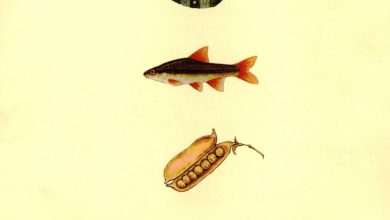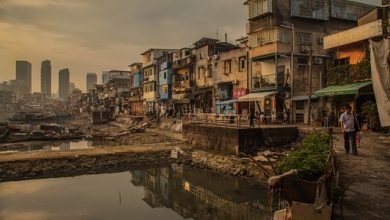“In a London Drawingroom,” by George Eliot was penned during the tumultuous era of the Industrial Revolution and serves as a poignant critique of urban life in 19th-century London. The city is portrayed as a grim, suffocating environment, emphasizing the loss of human connection, individuality, and the beauty of nature in the face of industrialization. The poem’s intent is to shed light on the dehumanizing effects of urbanization, where individuals become anonymous entities, disconnected from both each other and the restorative power of nature, inviting readers to reflect on the human condition in an ever-changing urban world.
Context & Background
“In a London Drawingroom” by George Eliot aligns with other Victorian literature that critiques the impact of industrialization and urbanization on society and the individual. The Victorian era (1837-1901) was marked by significant social and economic changes in Britain. London, as the capital and the epicenter of the British Empire, experienced rapid growth and transformation during this period. It also witnessed the Industrial Revolution, which began in the late 18th century, had intensified, leading to urbanization, the rise of factories, and increased pollution. The population of London surged dramatically, and the city expanded to accommodate the influx of people seeking employment. Social disparities were glaring during this era, with stark differences between the wealthy upper class and the impoverished working class. The poem captures the growing sense of alienation and disconnection in the city, where people rush about in carriages and cabs, avoiding meaningful interactions.
The poem thus reflects the Victorian preoccupation with the consequences of industrialization, the loss of connection to nature, and the challenges of navigating an increasingly urbanized and stratified society. It paints a bleak picture of a city in the midst of transformation, where the relentless pace of life and the physical environment contribute to a sense of confinement and unhappiness.
The poem is set in London during the Victorian era, a period characterized by rapid urbanization and industrialization. The reference to a “Drawingroom” suggests a middle-class or upper-class setting, reflecting the growing divide between social classes in the city.
In a London Drawingroom | Summary & Analysis
The poem consists of a single stanza with 19 lines, creating an unbroken block of text that mirrors the oppressive and crowded atmosphere of London. The lack of stanza breaks or delineation of lines, reinforces the idea that there is no respite or escape from the city’s relentless environment. The meter employed is blank verse, using unrhymed lines of iambic pentameter. This choice may also be seen as contributing to the poem’s sense of monotony and dullness, mirroring the repetitive and industrialized nature of London life.
In a London Drawing Room | Analysis, lines 1-6
The sky is cloudy, yellowed by the smoke.
For view there are the houses opposite
Cutting the sky with one long line of wall
Like solid fog: far as the eye can stretch
Monotony of surface & of form
Without a break to hang a guess upon.
The opening lines introduces the readers to the setting and the speaker’s observation of the dismal cityscape of London from the comfort of a drawing room. The sky is described as cloudy and tainted by yellow smoke, likely from air pollution, caused by industries. The speaker laments the lack of a clear view or any breaks in the monotonous cityscape, emphasizing the dreary and imprisoning nature of urban life.
These lines exemplify George Eliot’s critique of the adverse effects of industrialization and urbanization on both the physical environment and the human experience. The polluted sky and the unending wall of houses symbolize the degradation of nature and the loss of a connection to the natural world.
The poem employs vivid imagery to paint a bleak picture of London. The “cloudy” and “yellowed” sky evokes a sense of pollution and gloom. The houses are described as “cutting the sky” and forming “one long line of wall,” creating a visual representation of the crowded, monotonous cityscape. The comparison of the row of houses to “solid fog” is a metaphor that highlights the suffocating and impenetrable nature of the city. It suggests that the city’s structures and pollution have obscured any sense of natural beauty or openness. The enjambment of lines 3-4, where the sentence flows from one line to the next without a pause, reflects the unbroken and relentless nature of the cityscape, mirroring the speaker’s feelings of entrapment. The cloudy, polluted sky and the unyielding row of houses symbolize the negative consequences of industrialization and urbanization. They represent the loss of natural beauty and the confinement of urban life.
The opening lines set the tone for the poem’s exploration of the dehumanizing and imprisoning aspects of city life during the Victorian era. The speaker’s critical perspective invites readers to reflect on the social and environmental consequences of rapid industrialization and urban expansion.
In a London Drawing Room | Analysis, lines 1-2
No bird can make a shadow as it flies,
For all is shadow, as in ways o’erhung
By thickest canvass, where the golden rays
Are clothed in hemp. No figure lingering
Pauses to feed the hunger of the eye
Or rest a little on the lap of life.
In the next section the poet continues to depict the desolation and degradation of London due to industrialization and pollution. The speaker observes that when birds fly over the city, they cast no shadows because the sun’s rays cannot penetrate the thick layer of smoke and smog that shrouds the urban landscape. The speaker uses vivid metaphors to liken the cityscape to a place where everything is in shadow, as if a massive canvas has been hung over it, blocking out the sun. It reinforces the idea that the city is a place where even the most basic and natural phenomena are disrupted.
The speaker personifies the sun’s rays by describing them as being “clothed in hemp.” This personification suggests that the sun itself is struggling to break through the pollution, emphasizing the city’s grim atmosphere. The absence of shadows created by the birds becomes a symbol of the absence of light, both literally and metaphorically. It represents the loss of beauty, vitality, and hope in the city. The use of “hemp” as a metonymy for canvas emphasizes the coarseness and thickness of the material that obscures the sun. It adds a tactile and sensory dimension to the description.
As the speaker gazes out of their window, they express a longing for something to break the monotony of the view. There are no human figures “lingering” in the scene, and nothing offers a respite from the dull and unchanging landscape. The speaker’s eye is described as “hungry,” conveying their desperate search for something of interest or beauty in the city. The speaker’s yearning for something to break the monotony of the view reflects the human desire for beauty, connection to nature, and respite from the grim urban environment.
In a London Drawing Room | Analysis, lines 1-2
All hurry on & look upon the ground,
Or glance unmarking at the passers by
The wheels are hurrying too, cabs, carriages
All closed, in multiplied identity.
In these lines, the speaker observes the frantic pace of life in London. People are described as rushing about, but they are not looking up or taking notice of their surroundings. Instead, they keep their gaze on the ground or merely glance at passersby without really seeing them. This imagery emphasizes the lack of connection and interaction among the city’s inhabitants.
The alliteration in repeated “h” sounds in “hurry on & look upon the ground” create a sense of urgency and speed in the lines, mirroring the hurried nature of city life. The vehicles being described as “closed, in multiplied identity” is a metaphor that conveys the anonymity and lack of uniqueness of city dwellers. It suggests that in the bustling urban environment, individuality is lost, and people become indistinguishable from one another.
The poem critiques the alienation and dehumanization brought about by the rapid changes of the Victorian era, portraying a city where people and objects alike are swept up in the relentless pursuit of progress.
In a London Drawing Room | Analysis, lines 1-2
The world seems one huge prison-house & court
Where men are punished at the slightest cost,
With lowest rate of colour, warmth & joy.
In the concluding lines, the speaker offers a profound and critical perspective on the state of the world, likening it to a vast prison-house and court. It serves as a metaphor that emphasizes the oppressive and judgmental nature of human existence, implying that people are constantly under scrutiny and subjected to restrictions and punishments with little regard to their well-being.
The punishment is not necessarily physical but implies a sense of confinement, restriction, and emotional deprivation. The repetition of the phrase “lowest rate of ” in reference to “colour, warmth & joy” suggesting a lack of vibrancy and happiness in urban city dwellers also emphasizing the dearth of these essential elements in the world. This parallel structure reinforces the speaker’s critique of the world’s bleakness. This could be seen as a commentary on the dehumanizing effects of industrialization, where the pursuit of material progress often comes at the expense of human connection and well-being,
George Eliot offers a somber and critical assessment of the human condition inviting readers to reflect on the societal and moral costs of progress.
In a London Drawing Room | Themes
Identity
The poem portrays the struggle of maintaining human identity and individuality amidst the oppressive urban environment of 19th-century London. In this bustling city, people become like anonymous, faceless entities, indistinguishable from one another. The speaker laments the loss of individuality as urban dwellers hurry through life, absorbed in their daily routines.
The metaphor of the city as a “huge prison-house” suggests that urban life confines people within rigid social structures and conformity. The constant rush and stress of city existence lead to a sense of alienation and detachment from one’s true self. The poem critiques the dehumanizing effects of industrialization, where people are reduced to machines that produce output.
Nature
Contrasted with the bleak and stifling cityscape is the idea of nature as a source of human identity and freedom. The speaker longs for the beauty and vitality of the natural world, where the sun’s ‘golden rays” evoke warmth and joy. Nature is depicted as a place of wonder and inspiration, a realm where individuals can find solace and connect with their inner selves.
On the other hand, the urban environment described in the poem, nature is obscured by pollution, industrialization, and towering buildings. The metaphor of the city as a place where the sun’s rays are “clothed in hemp” underscores the idea that the city stifles the natural beauty and spirituality that can nourish the human soul. Birds, typically symbols of freedom and grace, are rendered powerless and shadowless in this urban landscape. The poem suggests that the connection to nature is essential for maintaining human identity and inner richness.
Home
The poem indirectly suggests that the city, as depicted, is not a welcoming or comforting place that one might call “home.” Instead, it is portrayed as a cold, isolating, and oppressive environment. The speaker’s drawing room, while providing shelter, is not enough to counteract the overall sense of desolation in the city. In this sense, the poem highlights the loss of a true sense of home in the urban landscape.
The constant rush and isolation depicted in the poem suggest that people in the city may not experience a sense of homecoming or belonging in their daily lives. The absence of meaningful human interactions and the overwhelming presence of pollution and monotony create an environment where the concept of “home” is distant and unattainable.




